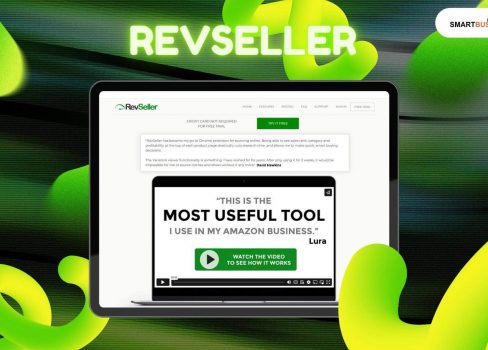Start your Business

Speed and Efficiency: How MyFastBroker com Optimizes Your Trading Experience
Need an easy way to begin trading? Myfastbroker.com is here to assist you! Whether you are a novice or an experienced trader, this site is easy to use and offers useful resources. You can try out numerous options, ranging from stocks and forex to commodities and cryptocurrencies. And there are comparison tools, reviews, and live market data to help you make the right decisions. Ready to be in control of your financial life? Myfastbroker.com will make trading simple, quicker, and more convenient for you! Read this blog, as we uncover everything about myfastbroker com ad how it can be a great part of your trading journey… What Is Myfastbroker.Com? Myfastbrokter.com is a famous trading site that helps traders deal with various stocks, forex, and other commodities. It also offers assistance with cryptocurrency trading. This site serves both independent and institutional traders. You can easily find reasonable spreads, better instruments, and great customer service. So, myfastbroker.com has been there for clients and investors who want a fast experience. Whether you are a novice or a seasonal trader, myfastbroker com makes it easy for you to understand everything about trading. The layout of the site and the categories help in accessing all the educational resources very easily. In addition, you can find easy trading strategies that you can utilize for your investments. I also teach you how to handle risks and take advantage of market sentiment. 💡 What Does the Platform Offer?The platform myfastbroker.com offers you: 👉 Comprehensive comparisons among the brokers based on the financial sector. 👉 You can find user reviews and ratings, which ensures better transparency and trust. 👉 The platform provides tools to find brokers catering to your needs. 👉 Lastly, it ensures a secure transaction for the traders, whether for stocks or investments. The Key Features Of Myfastbroker Com So, let’s go and take a deeper look at some of the features that make myfastbroker.com stand out among all the other competitor platforms for trading stock and investment. Feature Description User-friendly interface Myfastbroker.com successfully offers a very simple and intuitive platform. This is suitable for traders from all kinds of levels. Asset Range The platform allows resources to trade stock, options, forex, futures, and commodities. This has been helpful for most of the investors in the past. Tools for advanced charting Through this platform, traders can easily access advanced charting tools and techniques. Mobile application Myfastbroker.com also comes in a functional application. This allows the users to trade or track their profile from anywhere! Educational resources Myfastbroker.com offers a wide range of educational resources. This includes articles, blogs, and guidance to help users with tradings, mortgages, and investments. Competitive fees The platform helps you understand how to maximize your returns through low spreads on trades and competitive commission rates. The Reasons Why You Must Choose Myfastbroker. Com Over Others! What sets myfastbroker.com apart is its utmost dedication to maintaining transparency. While the other sites provide favorable evaluations, myfastbroker.com provides correct ratings for the broker. They also provide unbiased statistics about the brokers. This way, they can guarantee better trustworthiness while independently verifying each broker. Myfastbroker.com layout is easy to navigate. You can get brokerage guidance very easily, everything under the same roof. It lets the users read various reviews, compare all the choices, and even filter the brokers. This is highly advantageous for individuals as well as corporations. No matter what kind of trading you are looking for, stock or investment, myfastbroker com can easily find it. Different Account Types That You Learn From Myfastbroker Com Myfastbroker.com offers knowledge about different account types you encounter during trading. In the following, I am going to provide a complete breakdown of all the available options: Basic Account The basic account is ideal for all the beginners. This account offers you a lower minimum deposit. Moreover, it comes with all kinds of trading features. Advanced Account While using an advanced account, you may find more advanced tools. This is more than perfect for all levels of experienced traders. However, unlike a basic account, an advanced account might require you to pay a higher minimum deposit. Professional Account The professional accounts are designed for high-volume traders. They offer various premium features, including VIP support and an ultra-low spread. You are also required to make a substantial deposit. What Are The Types Of Trading You Can Find On myfastbroker.com This trading platform caters to a huge range of trading styles. This makes it beneficial for both new and seasoned traders. The platform strongly offers you forex trading. Through this, you can easily capitalize on capital fluctuation through many pairs. Are you in stock? This platform provides a wide range of access to various equities. It is more like an open space for those looking for short-term and long-term trades. Thirdly, myfastbroker.com also assists in commodity trading. Here, you can trade on crucial resources such as oil and gold. Now, if you are an advanced user seeking more strategic approaches, this platform offers you options and futures. These two financial instruments can offer you various opportunities. However, you need to have deeper knowledge and understanding about it. Myfastbroker Com | Is It Advantageous? Myfastbroker.com is famous for its user-friendly interface. It lets you navigate through the platform very easily. This way, you can easily focus on the strategies without disruptions. The second feature is its real-time market data access. This market data keeps the traders informed about fluctuations and trends. As a result, you can easily make decisions right on time. myfastbroker.com never fails to prioritize security. They have advanced encryption protocols through which traders can trade confidently, believing that data is well-protected. You can also find a huge variety of understandable resources for beginners and experienced traders. Other than that, some articles and tutorials can enhance your trading skills. In addition, myfastbroker.com also provides tools you can further customize as needed. And The Main Part….How Do Get Started With Myfastbroker.Com? Regarding trading, Myfastbroker.com always provides easier and more convenient guidance than anyone else. With myfastbroker.com, creating your trading account and beginning your journey is very easy. Sign Up Firstly, you must visit the Myfastbroker.com website. There, you can find details about many trading options. Then, go to one of the trading sites and sign up. You can fill out some details about yourself and create a password of your choice. Some sites may ask you security questions. Choose An Account Type The choice of account type depends on your trading activity and how much capital you currently have. There is a basic version of the account. However, you can also opt for the advanced one to understand the process. Fund Your Account You can deposit money through various payment options, including credit cards, bank transfers, and cryptocurrency. Start Trading Once you are done funding your account, you can further initiate trading on the platform. On the other hand, you can also conduct the buying and selling of the market through the platform, along with its tools and resources. Wrapping It Up! Myfstbroker.com is establishing itself as a successful leader in the trading landscape. Both a user-friendly interface and amazing features make it more accessible for novice and seasoned professionals. The platform is further dedicated to providing more advanced tools and resources that allow users to analyze the market or develop trading strategies. Now, I feel like diverse trading options that cater to various preferences are what set Myfastbroker.com apart from the rest. So, what is your interest area? Forex, stocks, or commodities, myfastbroker.com has something for everyone. This is the kind of flexibility all the traders look for. The flexibility further helps them to find a suitable niche. As technologies evolve, myfastbroker.com is looking for ways to blend innovation into its services. The continuous upgrade also offers great user experiences and successful guidance in trading in this marketing landscape. If you ask me, I would say choosing myfastbroker com can be your next successful step in the trading journey. Here, you can find opportunities through the expertise that can further help you control your financial future. YOU MAY ALSO LIKE: ADSS for GCC Traders: A Review of Its Trading Tools and Market Access Unlocking Profitability: Finding Your Ideal Best Broker For Option Trading How Cannon Trading Provides Traders with Real-Time Market Insights for Better Decisions

How Should a Startup Approach its PR Journey?

Shoshanna Raven: Empowering Female Entrepreneurs through Holistic Coaching

Brea Plumbing Pros: Your Trusted Local Plumbers

Aiming High: Building A Culture Of Excellence In Your Company

How Can The Lean Six Sigma Process Help You Revolutionize Your Business?

The Opportunities For Professionals To Immigrate As Skilled Workers In Canada
Start Business Advice
Grow your Business

Elevate Your Amazon Business: How RevSeller Transforms Product Research and Sales Optimization
If you sell on Amazon and would love a fantastic tool to monitor the marketplace, RevSeller is extremely useful! The handy Chrome browser extension assists you in making more informed selling decisions by providing you with real-time data on price, sales rank, FBA fees, and more—on the actual Amazon product page. Imagine this: instead of working with a lot of tools and tabs to calculate profits, you've got it all at your fingertips. You will not have to guess your prices, do the math manually for your margins, or question whether or not a product is worth selling. With functionalities like an FBA fee calculator, ROI estimator, and product variation analysis, RevSeller does it for you and runs your business more smoothly. Whether you are a novice or an experienced seller, this tool can simplify product research for you, save you time, and boost your profits. Want to know more? Let's find out how RevSeller functions, its features, costs, and whether it is the best choice for your business! The Concept Of RevSeller: What Exactly Does It Do? RevSeller is considered the most powerful tool for analyzing the seller market on the Amazon platform. Amazon merchants prefer using the RevSeller Chrome extension to find the best-selling products across all platforms. RevSeller is pretty much efficient for its quick and effective services. If you are one of the Amazon merchants, you can utilize the platform for quick market research. The best part? RevSeller can help you launch your products. The platform provides exciting features and performance indexes. You can use them to understand which product will sell the fastest and best in the market. Common Features Of RevSeller RevSeller is a great research tool for Amazon merchants. Its features make it efficient for the best and quickest selling of the products. Here’s a quick lowdown of all the revSeller common features: The platform offers you an FBA Fee calculator. Using this calculator, you can estimate the product fees. This feature further allows you to access the potential profitability after the fees are set. RevSeller's margin calculator can help you calculate the overall profit margin for specific products. It aids in pricing and profitability analysis. RevSeller offers you an ROI calculator to understand the return on investment or ROI. This way, as a seller, you can assess the overall potential of a specific product. The product details feature mainly provides you access to all the key information, including ASIN, dimensions, Amazon category, and weight. Lastly, RevSeller provides you with all the potential insights about current and historical data. This adds more value to your competitive analysis. Here’s An Easy Guide to Set Up RevSeller Setting up a revSeller platform is pretty easy and straightforward! Here’s how you can do it! First, You Have to Start by Creating an Account You have to visit the RevSeller official website to create an account. This would require you to provide all the basic contact information, such as: Phone number Email address Your name Business type, etc. Once you are done creating the account, they will send you a verification mail to your mailbox. You just have to click on the link to further confirm and activate your RevSeller account. Second, Fill Up All The Necessary Information After creating the account, you must fill out the setup information. RevSeller would ask you to complete all the necessary information, including your Amazon merchandise. Moreover, you just have to ensure you fill out the right information for an effective result. Next, You Must Download The Revseller Chrome Extension As for the RevSeller Chrome extension, Google Play has it! You just have to download the extension and further connect it to your Google Chrome. Moreover, the extension supports all kinds of devices. Thus, it will be very easy for you to navigate the platform from any device. This is totally at your convenience. PS: You cannot use the platform without the Chrome extension, so download it first! Okay? And That’s It, You Can Start Selling And Calculating Fees Once you are done with all the above steps, you are free to use RevSeller. You can do your thorough market research, calculate the currency market values, and make decisions on sales. This further helps you to start selling your products on the Amazon platform. So, Is The Platform Free Or A Paid One? The Pricing Of RevSeller RevSeller provides you with a Chrome extension along with a 30-day free trial. This helps you learn about the platform and understand all the features. Once the trial period is over and you decide to proceed with the topic, you will have to pay around $99.99 every year. Here’s a more detailed breakdown: Free Trials The platform provides you with a 30-day free trial for the Chrome extension. It requires no payment information. Subscription Plan Once the trial period is over, the user can subscribe to the Chrome extension for around $99.99 every year. Functionality The RevSeller Chrome extensions mainly help Amazon sellers estimate the following: FBA fees Mrgins ROI It also provides details about the variations along with viewing prices, offers and other specific information for the products. The Pros And Cons Of RevSeller In the following table, I will discuss RevSeller's advantages and disadvantages, which can help you make informed decisions. Advantages Disadvantages RevSeller can provide you with real-time data, which includes pricing, sales rank, and FBA fees. These can help the sellers to make an informed decision. RevSeller lacks a lot of product research features. For example, you may not be able to see the issue alerts like restrictions and IP alerts. These alerts are crucial for sellers to get a quick view of products that may cause account suspension. RevSeller always shows different variations of information, including prices, reviews, offers, and inventory status. RevSeller fails to provide estimated sales figures. For a seller, it is necessary to know exactly how many products they are selling. Profit calculation becomes easier with RevSeller. The calculator includes various costs necessary for pricing and profitability analysis. RevSeller does not work with any other browser. It only works well with the chrome browser. This can cause a major limitation for the sellers who prefer working with another browser. Client Testimonials: Here’s What Users Are Saying About Revseller Client testimonials mainly work as positive statements or endorsements. They help you understand how previous customers have benefitted from the product or service. Here are the reviews: “I’ve had the opportunity to use the Revseller extension now for the last week, and I have to say that I love it! It saves me a significant amount of time by providing information on each amazon listing, right at the top of the page. It is nice seeing the rank and category, ASIN, weight, etc. Then there’s the extra data: net payout after amazon fees whether merchant fulfilled or FBA; the opportunity to plug in different prices and check to see what the net payout would be; and the rank percentage in the particular category. I also really like having the quick link to Camel, Camel, Camel.” – Larry P. “Excellent tool, does what is says and works very well, having access to the tools we all use on a regular basis to quality products to buy and resell. And I see they are updating the product as well, which is great support. Very good product!!” – Doug R. “I have to say that I am impressed with Revseller. It saves a lot of time to have everything pop up as soon as you view the AZ detail page.” – Allie “Have a great day and thanks for an amazing extension. Your extension probably saves me 20 hours a week. Insanity.” – Chris “This extension is amazing. It shows all of your data in one place making it extremely easy to make an informed decision on whether to purchase a product or not. It has a built in calculator and you can see how many sellers there are both MF and FBA and your ROI and profit margin. Love it!” – Gayle T. Wrapping It Up! RevSeller is what Amazon sellers need if they want quick and accurate data to make informed business decisions. Its user-friendly interface and robust features make product research and profit analysis easy. If you want to sell on Amazon, try it out - you might honestly adore it! LEARN MORE: How To Use Apple Pay On Amazon? – Steps To Follow Maximizing Your Amazon PPC Success: 5 Goals to Keep in Mind Amazon FBA vs. Ecommerce: The Ultimate Comparison For Online Sellers
Take your business further
Plan
- 1. How To Build And Manage B2b E-Commerce Online Sales Channels
- 2. Navigating The Future Of Work: How To Find The Right Talent In Today’S Market
- 3. The Universal Quality Management Principles That Take Businesses To The Next Level
- 4. 5 New Communication Solutions To Boost Customer Satisfaction
- 5. Is Capital Goods A Good Career Path? Reasons To Work In Capital Goods Industry
Launch
Manage
- 1. Securing Your Documents: Strategies For Effective PDF Password Management
- 2. A Mini Guide To A Personalized Customer Experience
- 3. Can ChatGPT Content Be Detected? Yes, And Here Is How
- 4. The Enchanting Key To Operational Excellence: AI In Customer Service
- 5. Getting Started With Visual Regression Testing Using Playwright
Grow
- 1. Top 15 Cheapest Food Franchises To Open In 2024
- 2. Is Consumer Non-Durables A Good Career Path?
- 3. Sustainability And Innovation In The Plumbing Sector
- 4. Why Is It Important To Engage Communities In Preparedness Efforts? – Let’s Find Out
- 5. Make Sure You Win Leads In Your Business With These 8 Tips
Lead your Business

5 New Communication Solutions To Boost Customer Satisfaction
Effective communication is crucial in boosting customer satisfaction. It serves as the bridge between businesses and their customers, facilitating a clear, timely, and empathetic exchange of information. For customers, it’s not only about resolving issues or answering queries but also about making them feel heard, understood, and valued. Conversely, it allows companies to gather feedback, understand customer needs, and adapt their services accordingly. Here Are Five Latest Communication Solutions To Boost Customer Satisfaction In today’s digital age, here are five cutting-edge communication solutions that have emerged as game-changers in enhancing customer satisfaction. 1. Omnichannel Messaging An omnichannel chat or messaging integrates various messaging platforms (e.g., SMS, email, social media, and live chat) into a unified communication framework. It enables customers to switch between channels without losing the context of their conversations, while helping businesses offer support and engagement where their customers are most active, enhancing accessibility and responsiveness. The main advantage of omnichannel messaging is its ability to provide a cohesive customer journey. It maintains a single conversation thread across multiple platforms, allowing companies to offer clients a more personalized and efficient service. This boosts customer satisfaction and increases operational efficiency by streamlining communication processes. Additionally, with real-time data synchronization, customer service representatives can access previous interactions immediately. This allows for more informed and context-aware responses. 2. AI-Powered Chatbots Artificial Intelligence (AI) has brought about a significant shift in customer service dynamics. It helps significantly enhance customer satisfaction by reducing wait times and providing instant assistance. AI-powered chatbots offer 24/7 support without the need for human intervention. These chatbots can handle various inquiries, from basic questions about products or services to complex support issues. Besides handling multiple inquiries simultaneously, AI-powered chatbots can also escalate more complex issues to human agents. This helps companies ensure that their customers are always supported by the appropriate level of expertise. On top of all, AI-powered chatbots can learn from interactions, which is what sets them apart from other ordinary chatbots. This ability enables them to improve their responses and become more sophisticated over time. 3. Video Support Services Video support services enable face-to-face interactions, making communication more personal and engaging. It also makes communication more effective since visual cues and body language play a crucial role in understanding and empathy. These services are particularly beneficial for complex or sensitive issues that require detailed explanations. They help customer service representatives demonstrate products, troubleshoot issues in real-time, and establish a stronger emotional connection with customers. Adopting video support services can significantly boost customer satisfaction by adding a human touch to digital interactions. It breaks down the impersonal barrier often associated with online communication, providing a more reassuring and trustworthy experience. Furthermore, combining video support with foreign language interpretation services enables real-time visual communication, allowing customers to receive clear assistance regardless of their location or the nature of their query. Related: Gaining Loyalty: 5 Tips to Improve Customer Experience 4. Cloud-Based Communication Platforms Cloud-based communication platforms are advanced technological frameworks that enable the integration and management of various communication channels and services over the Internet. These platforms typically offer a suite of tools, including voice, video, chat, email, and file sharing, all hosted in the cloud rather than on physical servers owned or managed by the business. The key advantages of cloud-based communication platforms include scalability, flexibility, and accessibility. They allow businesses to adjust their communication capabilities easily as their needs evolve. These platforms also facilitate seamless internal communication among team members and external communication with customers, regardless of their physical location. Since the services are hosted in the cloud, users can access them from anywhere with an internet connection. This level of accessibility and integration supports a more unified and efficient communication strategy, enhancing collaboration and productivity. For businesses, adopting a cloud-based communication platform means lower upfront costs and reduced maintenance expenses. There’s no need to invest in physical infrastructure or manage updates and security measures since these are all handled by the service provider. Additionally, these platforms often come with advanced features like automated call routing, interactive voice response (IVR) systems, call analytics, and integration with other business tools (CRM systems, email marketing software, etc.), which can further enhance customer engagement and satisfaction by providing more personalized and responsive service. 5. Interactive Voice Response (IVR) Systems Interactive Voice Response (IVR) systems are automated telephony technologies that enable callers to interact with a company’s host system via a voice telephone interface. They guide users through menus and options by responding to voice commands or inputs from a telephone keypad. They’re designed to handle various tasks, from simple information retrieval, like checking account balances or business hours, to more complex transactions, such as booking appointments or making payments. The main purpose of IVR systems is to efficiently direct callers to the information they seek or the appropriate department within an organization without the need for direct interaction with a human agent. This streamlines the customer service process, making it more efficient for both the company and its customers, and allows businesses to manage high volumes of calls effectively. IVR systems don’t only free up customer service representatives to handle more complex issues that require human intervention, thereby improving overall service quality. They can also significantly enhance customer satisfaction by minimizing wait times and providing callers with quick, accurate, and personalized responses 24/7. Final Thoughts Adopting new communication solutions is essential for businesses aiming to enhance customer satisfaction in the digital age. They help companies provide a seamless, engaging, and responsive communication experience, ensuring that their customers feel valued and supported at every touchpoint. Read Also: Make Sure You Stay in Touch With These Companies as a Small Business Enhanced Checkout Experiences: Win Over Customers Through Payment Diversity Technological Innovations That Can Improve The Customer Experience In Business

How To Protect Your Business From Consumer Fraud? – Best Practices

Securing Your Documents: Strategies For Effective PDF Password Management

A Mini Guide To A Personalized Customer Experience

Can ChatGPT Content Be Detected? Yes, And Here Is How

Enhanced Network Infrastructure: Exploring Its Impact On Business Efficiency And Investment

Domain Registration Expired: What Does It Mean?
Quick fire
Find a Solution

Ecommerce Strategy Breakdown: Advanced Marketing Techniques
In the fast-paced world of ecommerce, having a solid marketing strategy is crucial for success. While basic techniques like social media and influencer marketing are essential, taking your ecommerce business to the next level requires advanced marketing techniques. This blog post will dive into ecommerce marketing and break down advanced strategies such as SEO, PPC, email marketing, and more. By tailoring these techniques specifically for ecommerce, you can effectively reach your target audience and drive conversions like never before. Let's look at how these advanced techniques can elevate your ecommerce game. Mastering SEO For Ecommerce Success In the realm of ecommerce, SEO stands as a foundational pillar. By understanding and implementing advanced SEO strategies, businesses can significantly improve their online visibility and attract more targeted traffic. This involves optimizing your website's structure, enhancing product descriptions with targeted keywords, and ensuring your content is easily crawlable by search engines. Stryde ecommerce marketing emphasizes the importance of focusing on long-tail, less competitive, and more specific keywords, thus attracting a more targeted audience. Additionally, optimizing for mobile devices and improving site speed is critical, as these factors greatly influence search engine rankings and user experience. Maximizing Returns With PPC Advertising Pay-per-click (PPC) advertising is a powerful tool for ecommerce businesses seeking immediate results and targeted visibility. By strategically bidding on relevant keywords, you can place your products directly in front of potential customers who are actively searching for them. Crafting compelling ad copy and optimizing landing pages is critical to converting clicks into sales. Additionally, utilizing Google Shopping ads allows your products to be showcased visually, increasing their appeal. To maximize returns, continuously analyze and adjust your campaigns based on performance data, focusing on high-converting keywords and refining your target audience segmentation. Elevating Your Brand With Email Marketing Email marketing remains a cornerstone of effective ecommerce strategy, offering unparalleled direct access to your audience's inboxes. Personalization and segmentation are key: tailor your messages based on customer behaviors and preferences to foster a sense of individual attention. Automate welcome emails, cart abandonment reminders, and personalized product recommendations to engage at critical moments. Testing subject lines, email designs, and call-to-action buttons can significantly enhance open rates and conversions. Incorporating user-generated content, like reviews, can boost credibility and encourage purchases, making email an invaluable tool for building relationships and driving sales. Enhancing Customer Experience Through Social Media Social media platforms offer unique opportunities for e-commerce brands to enhance the customer experience. Engaging directly with consumers through these channels allows businesses to gather feedback, address concerns, and foster a community around their brand. Creative campaigns and interactive content can capture attention and drive engagement, while social listening tools can provide valuable insights into customer preferences and trends. By including social media in their marketing strategy, online businesses can create a more personalized and responsive shopping experience, encouraging loyalty and repeat purchases. Leveraging Content Marketing To Drive Ecommerce Growth Content marketing offers a dynamic approach to engage and inform your audience, establishing your ecommerce brand as a thought leader in your industry. You can appeal to potential customers and keep them engaged throughout the buyer's journey by creating valuable, relevant content, such as blog posts, how-to guides, and videos. This strategy improves your SEO by generating organic traffic and helps build trust and loyalty among your customer base. To effectively leverage content marketing, focus on topics that hit home with your target audience's interests and pain points and distribute your content across various channels to maximize reach and engagement. Utilizing Data Analytics For Strategic Insights Data analytics plays a pivotal role in fine-tuning your ecommerce marketing strategy. Businesses can gain useful insights into consumer preferences and trends by analyzing customer behavior, purchase history, and interaction data. This information enables precise targeting and personalization, optimizing marketing efforts for better engagement and higher conversion rates. Through A/B testing and analytics tools, ecommerce marketers can identify the most effective strategies, adjust campaigns in real-time, and predict future trends, making sure that resources are invested in the most impactful areas. Integrating data analytics into your marketing approach offers a competitive edge by enabling data-driven decisions that drive growth. As we've explored, diving deep into advanced ecommerce marketing strategies offers many ways to connect with and convert your target audience. From the nuanced art of SEO to the personalized touch of email marketing, each technique provides its unique benefits and challenges. The secret to success is in the way you're integrating these strategies into a cohesive marketing plan, continuously optimizing based on data analytics, and remaining adaptable to industry trends and consumer behaviors. By doing so, ecommerce businesses can survive in this competitive landscape and thrive, carving out a significant presence in the digital marketplace. Read Also: Going Online: Ten Tips For Retailers To Leverage Digital Tools How Do You Find the Best Business Intelligence Tools? Best Tactics To Improve Search Engine Positioning















































































